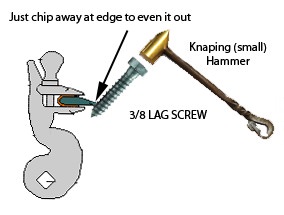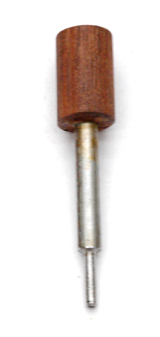- Joined
- Dec 25, 2011
- Messages
- 9,369
- Reaction score
- 4,549
You don't really want a perfectly straight,sharp edge in my opinion as it is not as strong to impact as a serrated edge with the reinforcing ridges between the flake scares.
The other reason for not using a straight sharp edge is you tend to cut shelfs into your frizzen face which break up the flint cutting edge. You will get far less of this with a serrated edge because every time you re- sharpen it moves impact point not only vertically but horizontally. The old ridges become the flake scares on the new edge.
This not only lengthens flint life but also frizzen life.
One more advantage to pressure flaking is you can move the edge upward or downward without moving the flints position in the **** jaws. This in tandem with flipping the flint to bevel up or down gives you a whole bunch more flexability in frizzen contact area to wear on.
The other reason for not using a straight sharp edge is you tend to cut shelfs into your frizzen face which break up the flint cutting edge. You will get far less of this with a serrated edge because every time you re- sharpen it moves impact point not only vertically but horizontally. The old ridges become the flake scares on the new edge.
This not only lengthens flint life but also frizzen life.
One more advantage to pressure flaking is you can move the edge upward or downward without moving the flints position in the **** jaws. This in tandem with flipping the flint to bevel up or down gives you a whole bunch more flexability in frizzen contact area to wear on.








